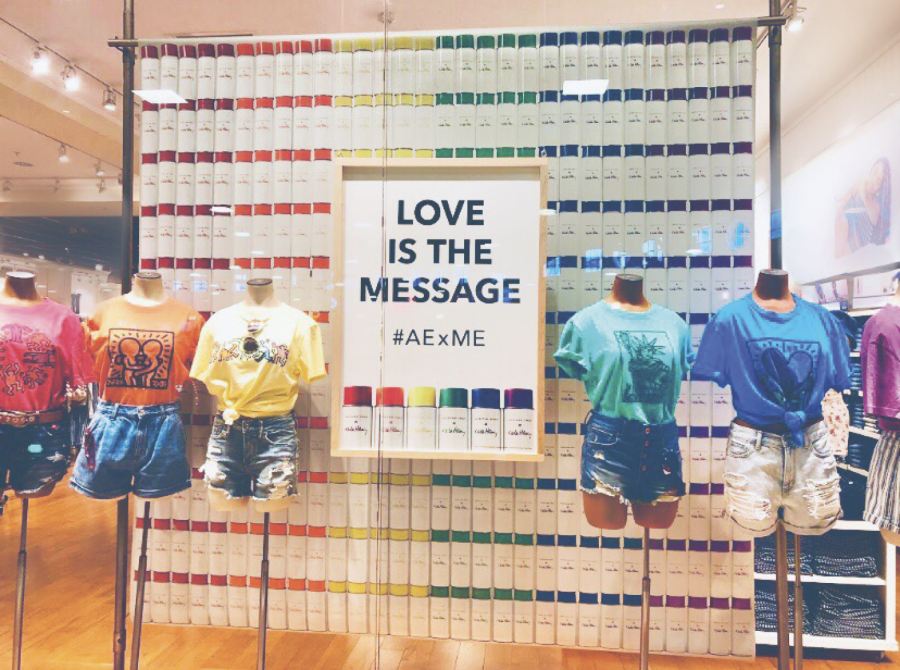The price of pride
What happens when companies commodify the celebration of individuality?
Photo Abby Jarecki
Pride display at American Eagle in the Monmouth Mall
Walking into many stores in the month of June, you’re bound to find some form of a rainbow. Whether it be plastered on the socks at Urban Outfitters or printed on shirts at H&M, various companies have incorporated LGBTQ+ pride into their merchandise.
“For years, I saw [this] as a good thing like ‘There’s all this acceptance,’” WHS sophomore Sean Marner explained. However, he soon realized that these inclusions are often much more problematic than what meets the eye, and LGBTQ+ pride has morphed into just another marketing tactic for companies.
The modern queer rights movement began after the Stonewall Riots of 1969 when LGBTQ+ patrons at the Stonewall Inn in New York City fought back against violent and discriminatory police. Prior to Stonewall, protests were reserved and limited in order to better the queer community’s public image. However, after this protest, they became louder and larger, bringing the community to the forefront and creating the first pride march in 1970 for equal rights.
In recent years, pride has become a way for companies to directly profit off of the LGBTQ+ population and give little in return. For example, Adidas released the “Pride Pack” collection in 2018, but at the same time, they were a sponsor for the World Cup in Russia, a country known for its anti-LGBTQ+ laws. Similarly, H&M’s new pride collection is blurred by the fact that they have clothing plants in China, which also has a similar history of oppressive policies toward the gay community.
This increased commercialism of pride can be attributed to how the nature of the pride movement has changed over the years. Although politics have always played a large role, in the past few years, pride has become more of a celebration. In many ways, this is good; it means that there has been significant progress for queer rights. However, it allows for pride to be a clear target for profit.
Of course, producing pride-themed products can be beneficial because it brings rights to the forefront, and companies will often donate money to various causes. However, these contributions are often meager, the charities are problematic and the impact of the donations a lot smaller than real work to help the LGBTQ+ community. This type of action highlights a phenomenon known as “slacktivism,” a type of activism that involves little effort and often has no results.
“It’s lazy,” Marner said. “It provides a standard for people that if you wear a T-shirt, you would be considered an activist when that’s not really doing anything at this point.”
If you really want merchandise, instead of contributing to these “morally skewed” companies, Marner recommends buying from queer artists who will directly benefit and buying brands you know you can trust. If the money is going to a charity, you should see if it’s actually making a difference.
“It’s morally conflicting [knowing] which brands actually do care and which brands are doing it just to profit off of the community,” Marner said. “At the end of the day, they’re always making money.”
If companies genuinely support the community, they need to begin to contribute to change that will last a lot longer than any rainbow shirt.

